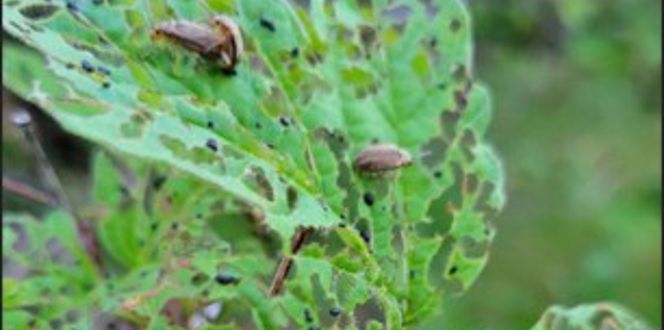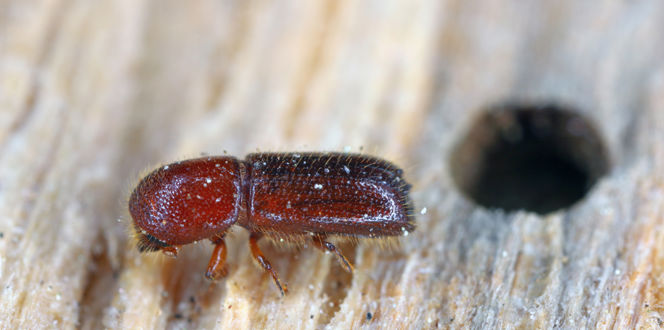Our pines and evergreens are often some of our favorite trees in the yard.
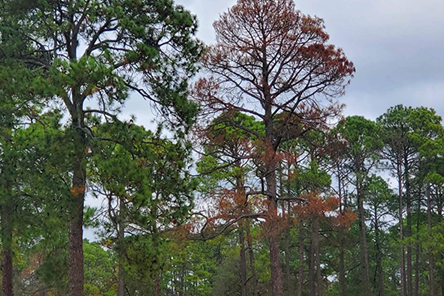
No matter the season or weather, they’re always there to brighten our day with a pop of green.
Now, your pine trees may ask for a favor in return – protection from pine beetles.
From coast to coast, destructive pine beetles are eating their way through our pine trees.
Learn the common signs of pine beetles, how to prevent them from hurting your trees and how to control them if they’re already there.
How do I know if my trees have pine beetles? What are the symptoms?
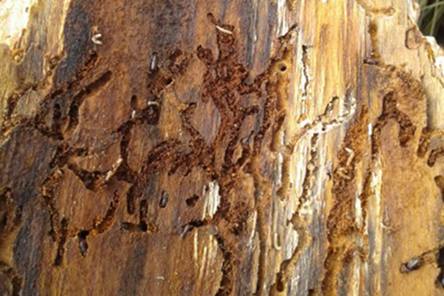
Whether the mountain pine beetle, Southern pine beetle, or Western pine beetle is in your area, the signs they leave behind are the same.
On pine trees, look for these symptoms.
- Beetles 3-7 millimeters in length
- Small, yellow gummy-shaped sap formations, called pitch tubes
- Fine, powdery red-brown sawdust around holes on tree bark
- Foliage that changes to a dull green, then yellow, and finally a reddish-brown
How can I protect my pines from pine beetles?
If you have pine trees and know pine beetles are in your area, proactive prevention is your best bet to save your pine trees.
Pine beetles of all kinds – including the Western, Southern, and mountain pine beetle – attack weak trees. Generally, pine beetles leave healthy trees alone. However, if their population is high, they may attack healthy trees as well.
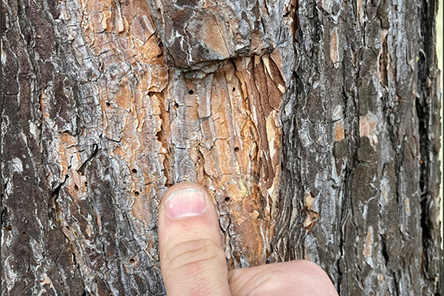
Work with your local arborist to create a long-term plant health care plan. Most often, they’ll keep your trees fertilized, mulched, pruned, and watered during drought or other stressful periods. Most importantly, they can plan how to thin trees out at the right time when they are too close together. Crowded pine trees are often too weak and susceptible to beetle attacks. This way your trees are less vulnerable to damage.
You can also proactively apply insecticide treatments to stop these harmful beetles before they attack, especially to keep an infestation from spreading when an initial tree is attacked.
How do I control pine beetles? Is there a treatment for pine beetles?
If your tree looks like it’s infested with pine beetles, have a certified arborist out to confirm. From there, your arborist can help determine the next step.
Often, infested trees are removed to prevent the beetle from spreading to other pines in your yard.
The treatment for pine beetles works best when applied before an infestation is detected.
If you have a pine tree you love, act early to reduce pine beetle impact and damage.


